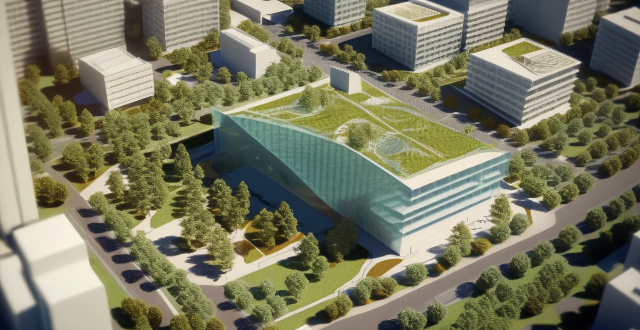Climatic conditions are crucial for the location and design of new urban developments, influencing water access, disaster risk, sunlight exposure, building materials, energy efficiency, and green spaces. Understanding these factors helps create sustainable cities that can withstand environmental challenges.

Climatic Conditions and New Urban Developments
Climatic conditions play a crucial role in shaping the location and design of new urban developments. Understanding how climate affects urban planning is essential for creating sustainable, livable cities that can withstand the challenges of a changing environment. In this response, we will explore the various ways in which climatic conditions influence the location and design of new urban developments.
Location
1. Access to Water
- Availability: The availability of water resources is a critical factor in determining the location of new urban developments. Areas with sufficient water supplies are more likely to be chosen as sites for urban growth.
- Quality: The quality of water resources also plays a significant role in site selection. Areas with clean and potable water sources are preferred over those with contaminated or polluted water bodies.
2. Natural Disasters
- Risk Assessment: Climatic conditions such as hurricanes, floods, and earthquakes can significantly impact urban development. Areas prone to natural disasters may be less suitable for urban growth due to the increased risk of damage and loss of life.
- Mitigation Strategies: In areas where natural disasters cannot be avoided, urban planners must incorporate mitigation strategies into their designs to minimize potential harm.
3. Sunlight Exposure
- Orientation: The orientation of buildings and streets can be influenced by sunlight exposure. For example, in colder climates, buildings may be designed to maximize sunlight exposure to reduce heating costs.
- Shading: In hotter climates, shading strategies such as tree planting and building placement can be used to reduce heat gain and improve energy efficiency.
Design
1. Building Materials
- Durability: Climatic conditions can dictate the type of building materials used in urban development. In areas prone to extreme weather events, durable materials such as concrete and steel may be preferred over more fragile options like wood.
- Insulation: Proper insulation is essential in both cold and hot climates. In colder regions, thicker insulation is required to prevent heat loss, while in hotter climates, reflective insulation can help reduce heat gain.
2. Energy Efficiency
- Renewable Energy Sources: Climatic conditions can influence the use of renewable energy sources in urban development. For example, areas with high solar radiation may prioritize solar panel installations, while windy regions may focus on wind turbines.
- Energy-Efficient Design: Energy-efficient design principles such as passive solar heating, daylighting, and natural ventilation can be incorporated into urban development plans to reduce energy consumption and greenhouse gas emissions.
3. Green Spaces and Landscape Design
- Microclimate Creation: Green spaces and landscape design can help create microclimates within urban areas, reducing the urban heat island effect and improving air quality.
- Stormwater Management: Landscape design can also play a role in stormwater management by incorporating features such as rain gardens, bioswales, and permeable pavements to reduce runoff and improve water quality.
In conclusion, climatic conditions have a profound impact on the location and design of new urban developments. By considering factors such as water availability, natural disasters, sunlight exposure, building materials, energy efficiency, and green spaces, urban planners can create sustainable cities that are well-equipped to handle the challenges posed by our changing climate.